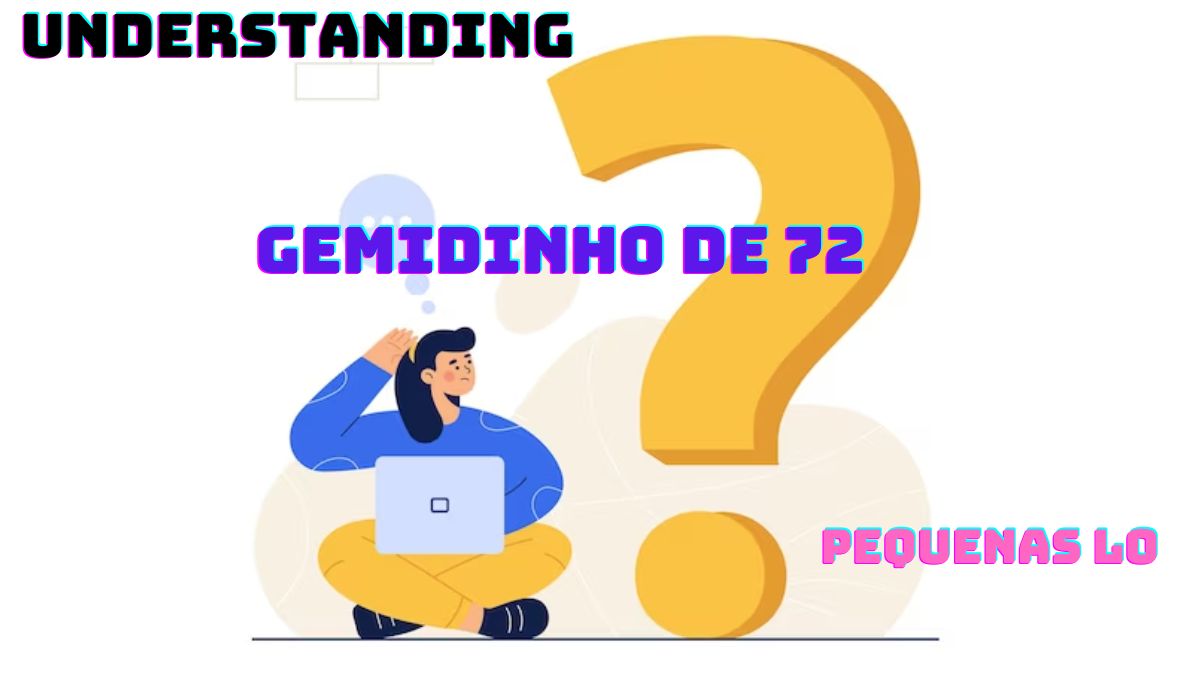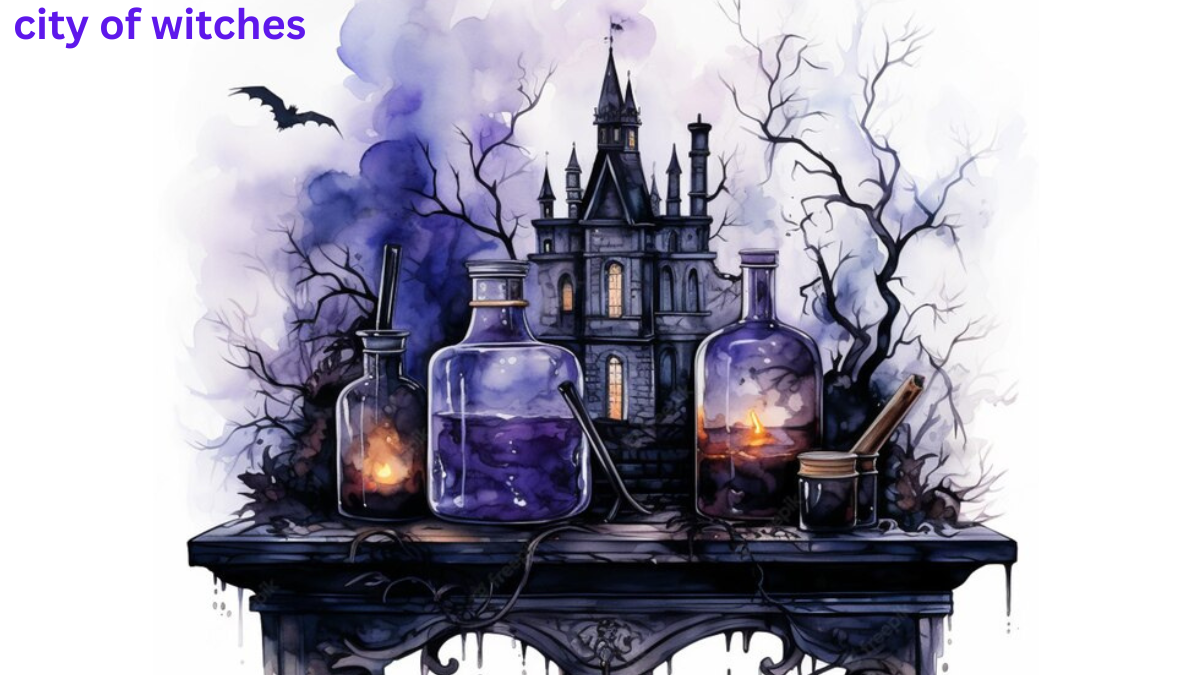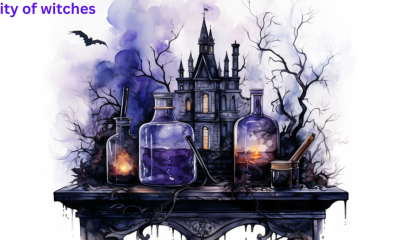Education
Understanding Gemidinho de 72 Pequenas Lo

The term “Gemidinho de 72 Pequenas Lo” may sound strange to the uninitiated. This segment points to translate the title, investigating its etymological roots and social intentions. Understanding the title is the key to opening the charm inside.
Embracing the Enchantment
Gemidinho de 72 Pequenas Lo is more than fair a title; it’s an involvement, a travel into a domain of charm. This area investigates the passionate and tangible components that make Gemidinho de 72Pequenas Lo a one of a kind and captivating marvel.
The Magic Behind the Name
Linguistic Exploration
Breaking down the title uncovers etymological subtleties that contribute to its charm. “Gemidinho” may inspire sentiments of delicacy and value, whereas “72 Pequenas Lo” may imply at a combination of wealth and multifaceted nature. The blend of these components makes a title that resounds with both puzzle and appeal.
Cultural Significance
In certain societies, numbers and words carry typical implications. This segment dives into any social or numerical importance inserted within the title “Gemidinho de 72 Pequenas Lo,” investigating how these components contribute to the in general charm.
Conclusion
In conclusion, Gemidinho de 72 Pequenas Lo is more than fair a title; it’s a captivating travel into charm. From etymological excellence and social reverberation to the passionate and tactile encounters it offers, Gemidinho de 72 Pequenas Lo has ended up a marvel that sparkles interest and captivates the creative ability. As devotees investigate its beginnings, inundate themselves in its enchantment, and share their encounters, Gemidinho de 72 Pequenas Lo proceeds to reveal its charm, clearing out an permanent stamp on those who set out to share in its interesting appeal.
FAQs
1. What Does "Gemidinho de 72 Pequenas Lo" Mean?
Gemidinho de 72 Pequenas Lo could be a title that typifies a one of a kind encounter. While its exacting interpretation may not pass on the total quintessence, the title insights at a mix of delicacy, plenitude, and intricacy.
2. The Origin Story: How Did Gemid-inho de 72 Pequenas Lo Begin?
The root story of Gemidinho de 72 Peq-uenas Lo may be a story worth investigating. This area jumps into the beginning of this charming marvel, revealing the motivation and inventiveness that brought it to life.
3. What Makes Gemidi-nho de 72 Pequenas Lo Unique?
Gemidin-ho de 72 Pequenas Lo recognizes itself through its title, encounter, and the feelings it brings out. Its uniqueness lies within the combination of etymological magnificence, social reverberation, and the charm it offers to those who share in it.
4. How Can One Experience the Enchantment of Gemidinho de 72 Peq-uenas Lo?
Encountering Gemid-inho de 72 Pequenas Lo includes more than fair the exacting; it’s approximately inundating oneself within the emotions and sensations it conjures. This segment gives experiences into how devotees can set out on this charming travel.
5. Is Gemidi-nho de 72 Pequenas Lo a Limited Edition?
Understanding whether Gemidinho de 72 Pequ-enas Lo could be a constrained version or a repeating marvel includes another layer to its charm. This segment investigates the accessibility and eliteness of the charming involvement.
6. Does Gemidinho de 72 Pequ-enas Lo Have Cultural Significance?
Social components frequently include profundity to encounters. This area examines whether Gemidinho de 72 Peque-nas Lo holds social importance, investigating any conventions or images implanted in its title or concept.
7. Can You Share Success Stories Related to Gemidi-nho de 72 Pequenas Lo?
Devotees and members frequently share their stories of charm. This segment compiles victory stories, tributes, and the affect Gemid-inho de 72 Pequenas Lo has had on those who have submerged themselves in its enchantment.
8. How Has Gemid-inho de 72 Pequenas Lo Influenced Popular Culture?
The influence of Gemid-inho de 72 Pequenas Lo may expand past its quick community. Thissection investigates its affect on prevalent culture, whether through social media patterns, references inmedia, or collaborations with other social marvels.
9. Are There Any Plans for Future Expansions or Variations of Gem-idinho de 72 Pequenas Lo?
Long term holds conceivable outcomes for development and advancement. This segment investigates any plans for growing orvarying the Gemi-dinho de 72 Pequenas Lo involvement, keeping devotees charmed almost what may come following.
10. How Can Enthusiasts Connect and Share Their Gemidinho de 72 Pequ-enas Lo Experiences?
Creating a community around Gemid-inho de 72 Pequenas Lo involves connecting enthusiasts. This section provides insights into how individuals can share their experiences, connect with fellow enthusiasts, and become part of the enchanting narrative.
Education
city of witches novel

The book “city of witches novel” is a fascinating blend of magic, adventure, and mystery, and it is begging to be explored. The novel’s amazing trip takes place in a world where witchcraft is widespread. The novel’s plot, characters, themes, and more will all be discuss in detail below. Let’s set off on this bookish journey together. We’ll break into why “City of Witches” is so influential and why it has so widespread appeal.
The City of Witches Novel: A Tale of Enchantment
Take yourself away from the real world and into the magical world of the “City of Witches” book. Written by one of the best in the fantasy genre, this book will transport you to a world where magic rules. The novel’s stunning imagery and twisting storyline take readers to a world where the mundane and fantastic coexist.
Unveiling the Intricate Characters
The Protagonist: A Glimpse into the Heroine’s Journey
Elara, our courageous main character, is a young lady who comes into her own magical skills. Accompany her as she explores her inner world and faces the dangers of a world rife with magic and hidden truths. Elara’s perseverance and grit make her an endearing and motivating protagonist for readers of all ages.
The Antagonist: Delving into Darkness
A story can only be as interesting as its opponent. In “City of Witches,” the mysterious and powerful enemy Morvanna makes an appearance. Morvanna’s dark goals and abilities lend complexity and mystery to the plot. Her sparring with Elara is sure to have you on the edge of your seat.
Themes That Enchant and Resonate
The Power of Friendship and Unity: Uniting Forces Against Adversity
The significance of friendship and community is emphasized throughout the story. Elara finds that by joining forces with other people endowed with magical abilities, they may triumph over any threat. We can all relate to this message of solidarity.
Self-Discovery and Identity: Embracing Who You Are
Elara’s quest is both a physical and an inward one. As she learns more about her mystical skills, she also learns more about herself. This subject of introspection inspires readers to recognize and appreciate their own special qualities.
Conclusion
The book “City of Witches” captivates readers with its captivating story, interesting protagonists, and meaningful issues. The work is compelling on many levels, from the protagonist’s quest for self-knowledge to the complex web of magic and mystery it creates. Your eagerness to learn more about this strange world and discover its secrets and mysteries will drive you to excitedly flip the pages.
FAQs
What Inspired the Author to Write “City of Witches”?
The author was inspired by different witch-related mythology and folktales. The inspiration for “city of witches novel” came from a need to create a world where magic exists and complicated individuals are the story’s main focus.
Is “City of Witches” Suitable for Young Readers?
The novel’s magic and adventure elements make it appealing to a broad audience. The novel’s emphasis on friendship and coming into one’s own makes it interesting to readers of all ages.
Are There Sequels Plan for the Novel?
The author has stated that Elara’s story would continue in two more books. In the next novels, readers will experience more fantastical adventures and see their favorite characters grow.
Where Can I Purchase “city of witches novel”?
You may buy the book from any number of online bookstores, including Amazon and Barnes & Noble. Local bookshops should be contacted as well.
Education
Exploring the überzetsen: A Comprehensive Guide to Translation

In an progressively interconnected world, the craftsmanship of interpretation plays a significant part in bridging phonetic crevices and cultivating worldwide communication. Among the horde of dialects, one term that stands out is “überzetsen.” This German word, meaning “to interpret,” typifies the substance of phonetic trade. In this article, we’ll dig into the complexities of überzetsen, investigating its centrality, challenges, and the advancing scene of interpretation.
The Significance of Überzetsen:
Interpretation serves as the foundation of viable communication over differing societies. Überzetsen, with its German roots, emphasizes the act of passing on meaning from one dialect to another. This handle not as it were encourages the trade of thoughts but moreover advances social understanding, breaking down obstructions that prevent worldwide collaboration.
Cultural Enrichment:
Überzetsen goes past the unimportant transformation of words; it includes capturing the subtleties, figures of speech, and social setting inalienable in a dialect. Through this handle, people pick up a more profound appreciation for diverse societies, fostering mutual regard and agreement.
Global Business Expansion:
Within the trade domain, überzetsen plays a pivotal part in extending worldwide reach. A well-executed interpretation procedure empowers companies to communicate successfully with universal gatherings of people, opening entryways to new markets and openings.
The Challenges of Überzetsen:
While the significance of interpretation is obvious, the errand isn’t without its challenges. Überzetsen experiences different obstacles, extending from phonetic complexities to social nuances, requesting a nuanced and apt approach.
Linguistic Nuances:
Dialects are complex frameworks with interesting structures, expressions, and expressions. Überzetsen requires a profound understanding of both the source and target dialects to guarantee precise and relevantly pertinent interpretations. The challenge heighten when managing with dialects with unfathomably distinctive syntactic structures.
Cultural Sensitivity:
Past words, überzetsen includes passing on social subtleties and informal expressions precisely. A need of cultural affectability can lead to misinterpretations, possibly causing mistaken assumptions or offense. Talented interpreters explore these social complexities to supply interpretations that resound with the target gathering of people.
The Evolving Landscape of Translation:
As innovation progresses, the field of überzetsen experiences critical changes. Computerization, counterfeit insights, and imaginative devices have reshaped the interpretation scene, offering new conceivable outcomes and tending to a few of the conventional challenges.
Machine Translation:
Machine translation, powered by manufactured insights, has developed as a game-changer within the interpretation industry. Stages like Google Decipher and DeepL utilize calculations to supply moment interpretations, progressing productivity for fundamental communication needs. Be that as it may, challenges endure in precisely capturing etymological subtleties and social nuances.
Human Touch:
In spite of innovative progressions, the human touch remains crucial in überzetsen. Proficient interpreters bring social understanding, setting mindfulness, and phonetic artfulness to the table. Whereas machines can help, the subtleties of human expression and social affectability require the mastery of a gifted interpreter.
Conclusion:
In conclusion, überzetsen is more than a word; it typifies the wealthy embroidered artwork of phonetic and social trade. As we navigate an interconnected worldwide scene, the importance of interpretation gets to be progressively clear. Whether it’s breaking down dialect boundaries in trade or cultivating cross-cultural understanding, überzetsen serves as a capable instrument in building bridges between differing communities. As innovation proceeds to advance, the concordant integration of human skill and imaginative devices guarantees that the craftsmanship of interpretation remains a dynamic and vital perspective of our interconnected world.
FAQs:
Q: Is überzetsen limited to written content?
No, überzetsen envelops both composed and talked communication. Interpreters work with different mediums, counting records, websites, sound recordings, and live elucidation.
Q: How does cultural context impact überzetsen?
Social setting is fundamentally to it. Interpreters must consider social subtleties, figures of speech, and social norms to guarantee exact and socially touchy interpretations.
Q: Can machine translation replace human translators entirely?
Whereas machine interpretation has made critical strides, it cannot completely supplant human interpreters. The nuanced understanding of dialect and culture, along side inventiveness, remains a interestingly human characteristic.
Q: What are the key skills required for überzetsen?
Effective überzetsen requests capability in both the source and target dialects, social mindfulness, flexibility, and the capacity to communicate meaning precisely in assorted settings.
Education
Exploring the Power of Integration with “Integremos”

Within the quickly advancing scene of innovation and commerce, integration has gotten to be a foundation for consistent operations and upgraded effectiveness. One striking player in this space is “Integremos,” a cutting-edge integration arrangement outlined to streamline forms, interface dissimilar frameworks, and clear the way for a more cohesive advanced ecosystem. In this article, we’ll dig into the complexities of Integremos, examining its highlights, benefits, and tending to habitually asked questions to supply a comprehensive understanding of its part within the advanced commerce environment.
The Essence of Integration in the Digital Age
In an time overwhelmed by assorted computer program applications, databases, and stages, the capacity to coordinated these components is fundamental. The computerized age requests consistent network to guarantee that information streams easily over frameworks. Integremos steps in as a powerful partner, advertising a bound together arrangement for businesses looking for to saddle the potential of integration.
Key Features of Integremos
Versatility in Integration
Integremos isn’t limited to specific industries or applications. Its flexibility permits for the integration of a wide cluster of frameworks, empowering businesses over divisions to put through their devices and advances easily.
User-Friendly Interface
Bragging an natural interface, Integremos guarantees that clients, regardless of their specialized mastery, can explore the integration prepare with ease. This user-friendly approach minimizes the learning bend and engages organizations to execute integration strategies swiftly.
Real-time Data Synchronization
Within the fast-paced trade environment, real-time information synchronization is basic. Integremos encourages the momentary exchange of information between associated frameworks, guaranteeing that businesses work with the foremost up-to-date data.
Customization Capabilities
Recognizing that each trade has special integration needs, In-tegremos gives vigorous customization capabilities. Organizations can tailor the integration handle to adjust with their particular workflows and prerequisites, advancing a more personalized and effective framework.
The Impact of Integremos on Business Operations
Enhanced Efficiency
By killing manual information exchange and decreasing the probability of blunders, In-tegremos contributes to increased operational proficiency. Robotized forms lead to speedier decision-making, expanded efficiency, and a more dexterous trade environment.
Cost Savings
Conventional strategies of information exchange and framework communication regularly cause noteworthy costs. Integremos, by mechanizing these forms, makes a difference businesses spare on operational costs, making it a cost-effective arrangement for companies of all sizes.
Improved Customer Experience
Consistent in-tegration deciphers to a more coherent client involvement. With In-tegremos guaranteeing that client information is reliably overhauled and promptly accessible over all touchpoints, organizations can provide a more personalized and responsive benefit.
Implementing Integremos: A Step-by-Step Guide
Assessment and Planning
Some time recently jumping into integration, a exhaustive appraisal of existing frameworks and a comprehensive integration arrange are fundamental. Integremos gives devices and assets to help businesses in this introductory stage, directing them through the recognizable proof of integration focuses and potential challenges.
Configuration and Setup
The natural nature of Integremos rearranges the arrangement and setup prepare. Clients can effectively characterize integration workflows, outline information areas, and set up the rules overseeing the information exchange between frameworks.
Testing and Validation
Thorough testing could be a basic stage in any integration prepare. Integremos offers testing situations and approval devices to guarantee that the integration works consistently some time recently being convey in a live environment.
Deployment and Monitoring
Once the integration is tried and approve, Integremos encourages a smooth sending prepare. Ceaseless observing instruments permit businesses to track theperformance of the coordinates frameworks and address any issues expeditiously.
Conclusion
Within the energetic scene of advanced trade, integration is not a luxury but a need. Integremos rises as a flexible and user-friendly arrangement, enabling organizations to consistently interface their frameworks, improve operational proficiency, and provide an unparalleled client encounter. By investigating its key highlights, affect on commerce operations, and providing bits of knowledge into the execution handle, this article points to demystify Integremos and highlight its essential part in forming long term of coordinates trade biological systems.
FAQ:-
Q: What types of systems can Integremos integrate?
Integremos is outlined to coordinated a wide extend of frameworks, counting CRM stages, ERP frameworks, e-commerce stages, databases, and more. Its flexibility guarantees compatibility with different innovations, making it a comprehensive arrangement for businesses with different program biological systems.
Q: Is technical expertise require to use Integremos?
Whereas a basic understanding of integration concepts is advantageous, Integremos highlights a user-friendly interface that minimizes the require for extensive technical mastery. The stage is planne to be accessible to clients with changing levels of specialized capability.
Q: How does Integremos ensure data security during integration?
Security could be a best need for Integremos. The stage utilizes strong encryption conventions, secure APIs, and confirmation components to defend information amid the integration prepare. Customary security overhauls and compliance with industry benchmarks assist improve the assurance of touchy data.
Q: Can Integremos handle real-time data synchronization?
Yes, real-time data synchronization is one of the key highlights of it. The stage guarantees that information is upgraded in real-time over associated frameworks, empowering organizations to form educated choices based on the most recent data.
Q: What support and resources does Integremos provide for users?
Integremos offers comprehensive back and assets for clients, counting documentation, instructional exercises, and a responsive client bolster group. Normal overhauls and preparing materials keep users informed around the most recent highlights and best hones for integration.
-

 Information8 months ago
Information8 months agoThe Ultimate Guide to Navigating Your 92career: Unlocking Opportunities and Success
-

 Fashion3 months ago
Fashion3 months agoExploring the Enigma of “λιβαισ”:
-

 Information3 months ago
Information3 months agoUnlocking the Potential of Amazons GPT55X
-

 Entertainment8 months ago
Entertainment8 months agoPink Heart Emoji 💖
-

 Entertainment8 months ago
Entertainment8 months agoBubble Slides: A Playful Fusion
-

 Information3 months ago
Information3 months agoUkraine War: Unraveling the Complex Conflict
-

 Education3 months ago
Education3 months agocity of witches novel
-

 Information8 months ago
Information8 months agolt. col. artyom gorodilov

